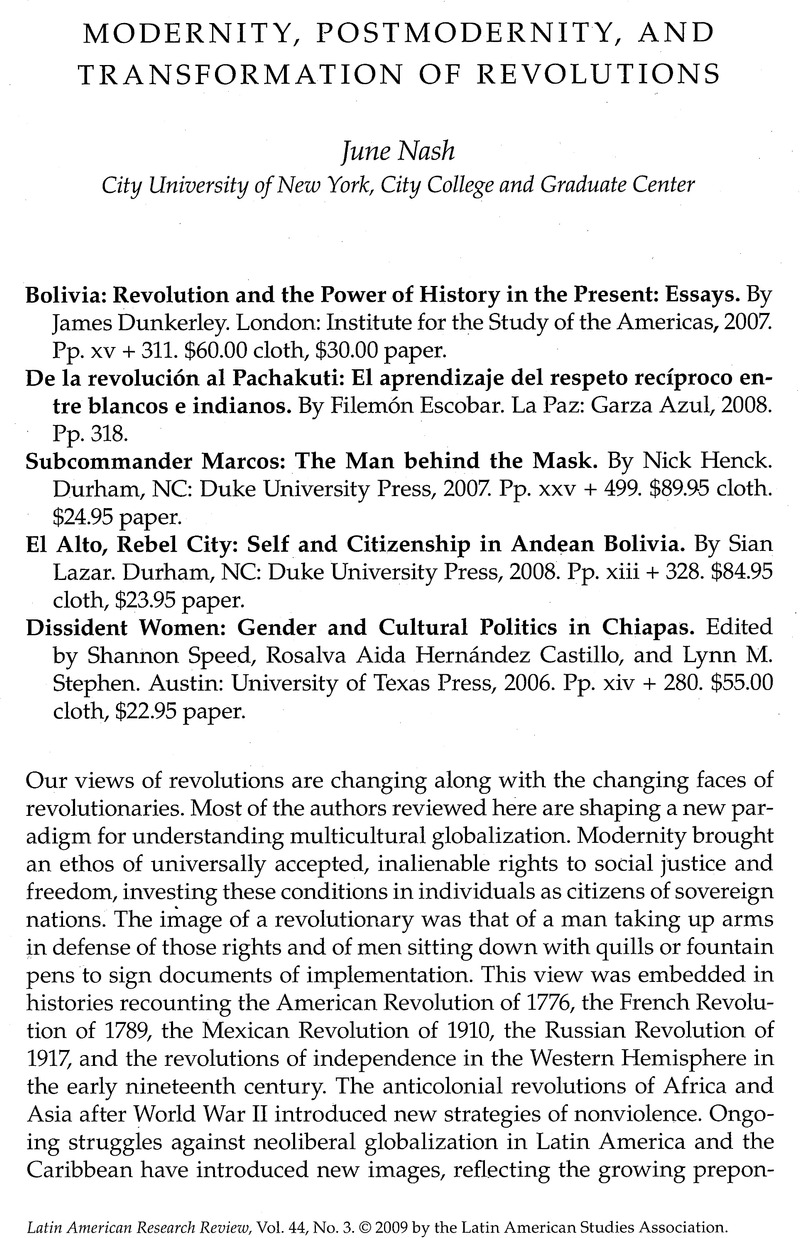No CrossRef data available.
Published online by Cambridge University Press: 05 September 2022

1. Hans Buechler, The Masked Media: Aymara Festivals and Social Integration in the Bolivian Highlands (The Hague: Mouton, 1980).
2. Michael Hardt and Antonio Negri, Empire (Cambridge, MA: Harvard University Press, 2000).
3. Readers interested in the political and economic basis in neoliberalism of the behaviors that Lazar describes can find a substantive ethnography in Lesley Gill, Teetering on the Rim: Global Reconstructuring, Daily Life, and the Armed Retreat of the State (New York: Columbia University Press, 2000).
4. John Womack Jr., Rebellion in Chiapas: A Reader (New York: New Press, 1999), 252.
5. R. Aida Hernández Castillo, ed., La otra palabra: Mujeres y violencia en Chiapas antes y después de Acteal (San Cristóbal de las Casas: Centro de Investigaciones y Estudios Superiores en Antropología Social, 1998); Shannon Speed, Rights in Rebellion: Indigenous Struggles and Human Rights in Chiapas (Stanford, CA: Stanford University Press, 2008); Christine Eber, “Las mujeres y el movimiento para la democracia en San Pedro Chenalhó,” in Hernández Castillo, La otra palabra, 84–104; Christine Kovic, “Con un solo corazón: La iglesia católica, la identidad indígena, y los derechos humanos en Chiapas,” in The Explosion of Communities in Chiapas, Mexico (Copenhagen: International Work Group for Indigenous Affairs, 1994), 109–119; Christine Kovic, “Walking with One Heart: Indigenous Women and the Catholic Church among the Maya of Highland Chiapas” (Ph.D. diss., City University of New York, 1997).
6. Duncan Earle and Jeanne Simonelli, Uprising of Hope: Sharing the Zapatista Journey to Alternative Development (Walnut Creek, CA: Altamira Press, 2006); June Nash, “Development to Unite Us: Autonomy and Multicultural Co-existence in Chiapas and Guatemala,” New Proposals: Journal for Marxism and Interdisciplinary Inquiry 1, no. 2 (2008): 14–39.